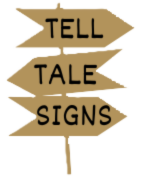Want some must-see activities and also some unique ways to spend your time in Marrakesh? You’ve come to the right place! We recently visited and heavily researched before setting off (so you don’t have to!)
- Unique things to do in Marrakesh (including free things & must do’s)
- Things to do in Marrakesh at night
- General tips for your stay
Free walking tour of the Medina
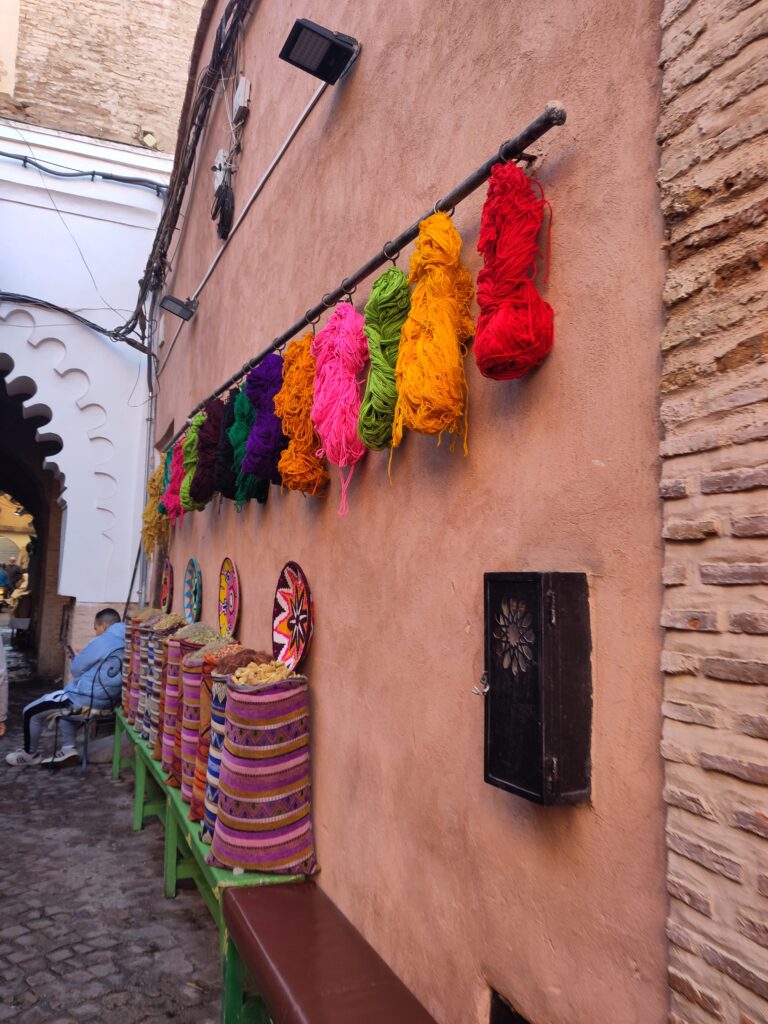
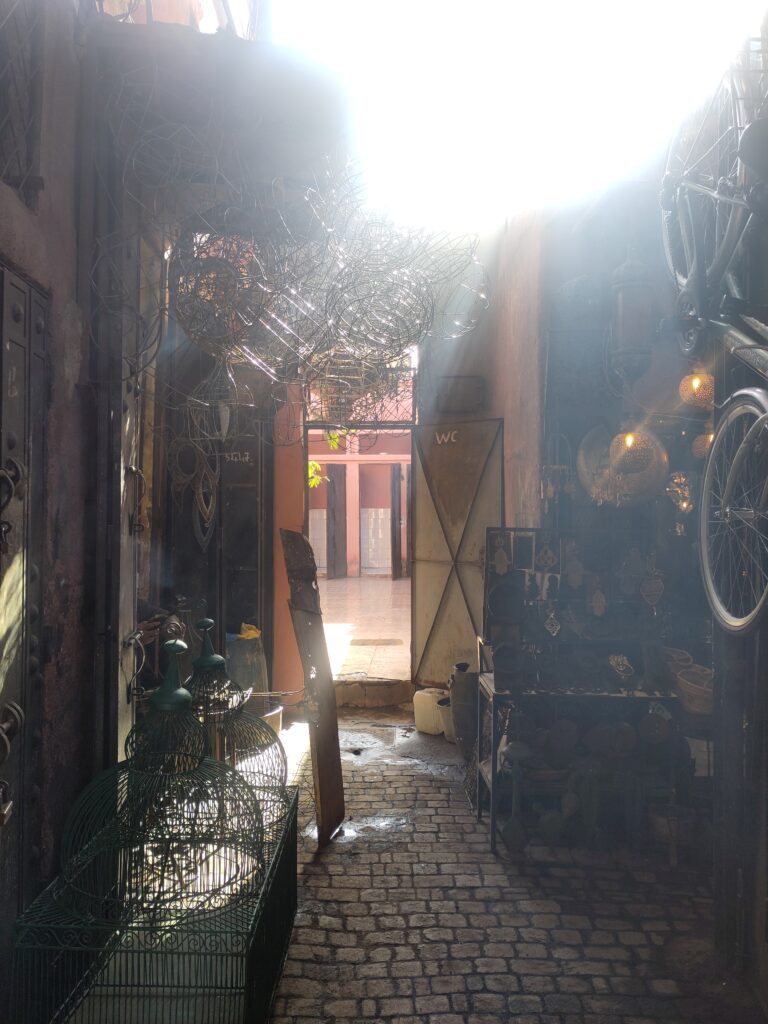
If you’re a regular reader it won’t be any surprise that we started our trip with a free walking tour. We find it’s the best way to get history, context and recomendations from the people who know it best; the locals.
Our guide Ismael from Marrakech with Locals was great. He taught us about the history of the city, and let us in on how to further read the architecture in the medina to know the function of certain buildings.
He of course knew how to navigate the souks with expert precision and took us to lesser-visited corners of it. We got into the depths of the souks and had the opportunity to see talented craftsmanship in metal works, leather and more.
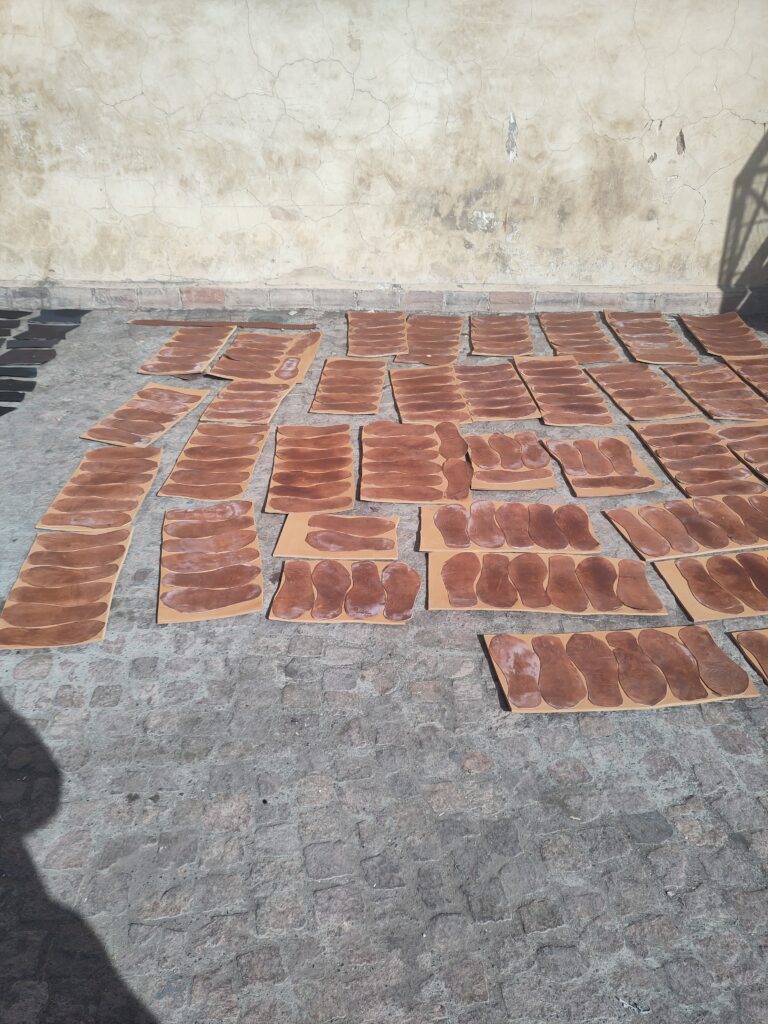
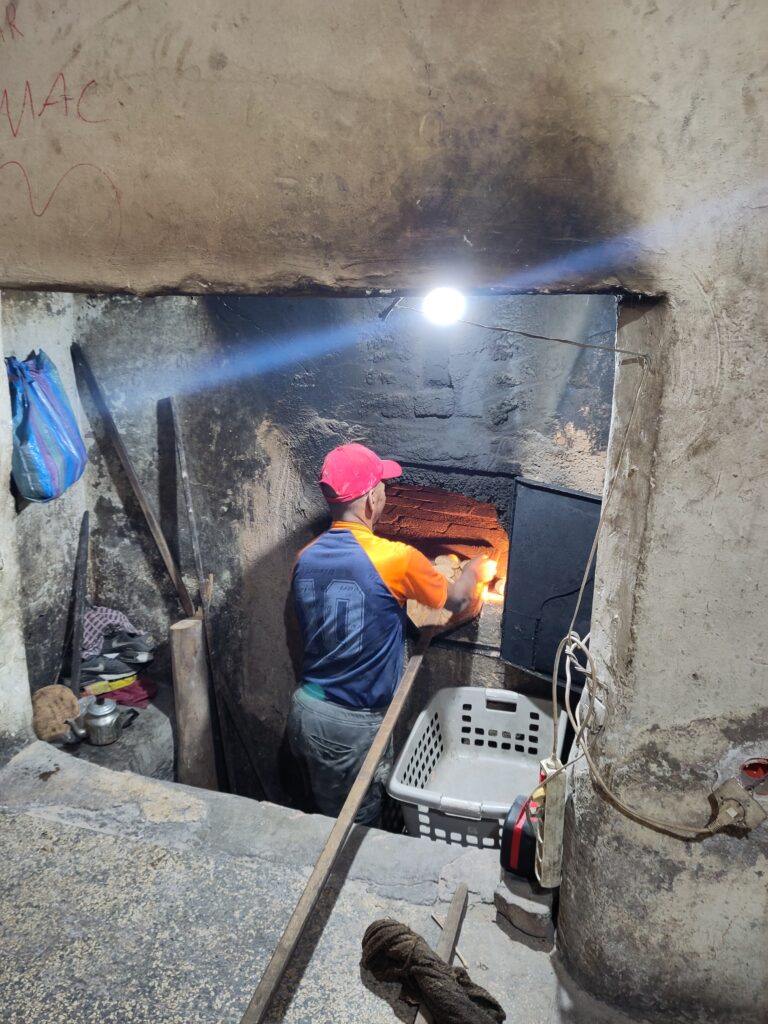
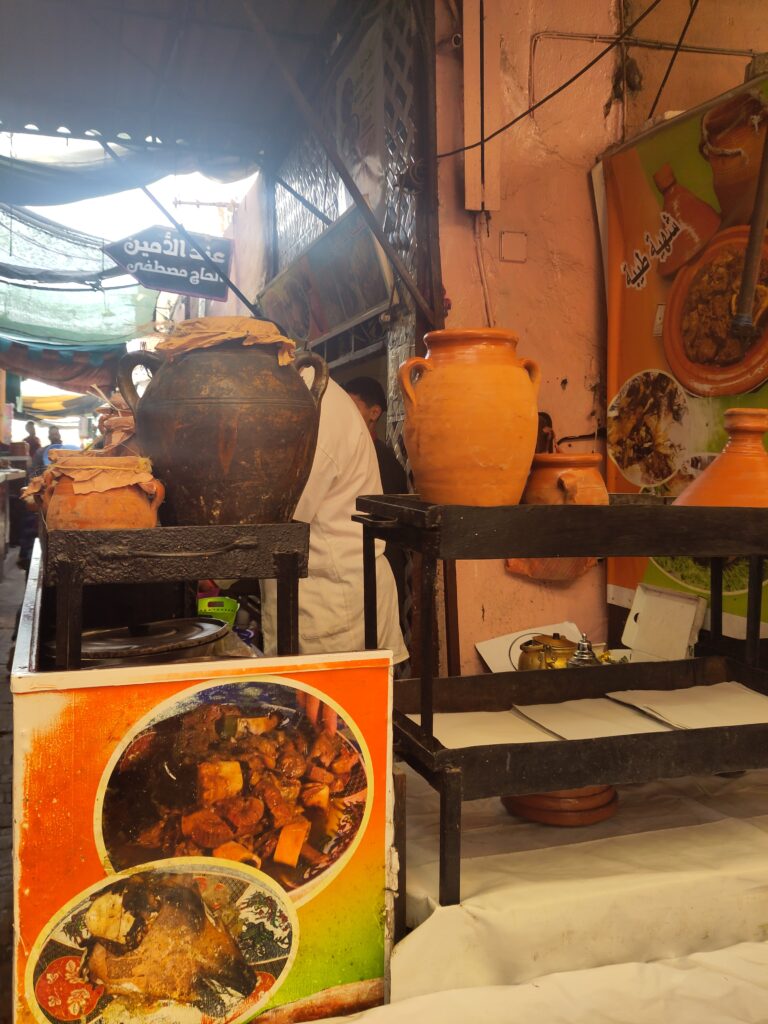
He also told us about how neighbourhoods are structured around community buildings such as Mosques, Hammams, and communal Bakeries. He even took us into a community bakery where we got to try freshly baked bread. Families will take their dough to the bakeries and pay to get them freshly baked. They remain an important part of the community.
Definitely book this tour – without it it’s unlikely we’d have gotten to access such places in the souks. Tours run daily but it’s best to WhatsApp app ahead to make sure you get a spot (they’re limited).
Cost: Free (tip-based – you pay what you think it was worth after the tour).
Visit a Hammam
Speaking of community-based buildings; we highly recommend you visit a Hammam during your stay in Morocco. A Hammam is a public bathing facility primarily used for cleaning the body and exfoliating.
Historically, when typically people didn’t have access to private bathing within the home, people would visit the Hammam. Now, Ismael explained that despite having private bathing facilities at home, the public Hammams remain an important place in the community. He said people visit from weekly to 3 weekly.
Public Vs Private Hammam
You can opt to visit the public Hammams or visit a private one.
The public ones are separated by sex so we opted for a private one so we could go together.
The public ones are way cheaper, often just a few euros to enter though you typically need your own equipment. You’ll need a Kessa mit (available from the souks for between 7-20 MAD) among other items.
You are supposed to visit mostly nude with only small bottoms on so bear that in mind if you visit. I packed some bikini bottoms which worked well so I didn’t need to use the skimpy disposable underwear provided (these may not be provided in the public hammams). Joe wore his swim shorts and the pants supplied for males were generally a similar size.
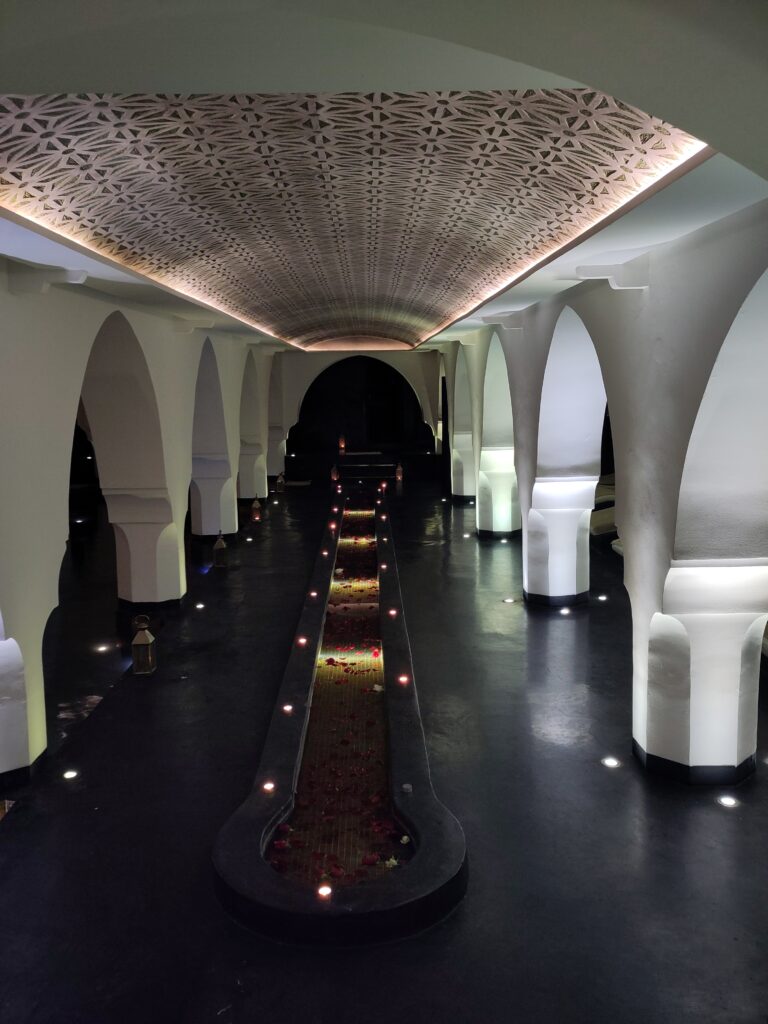
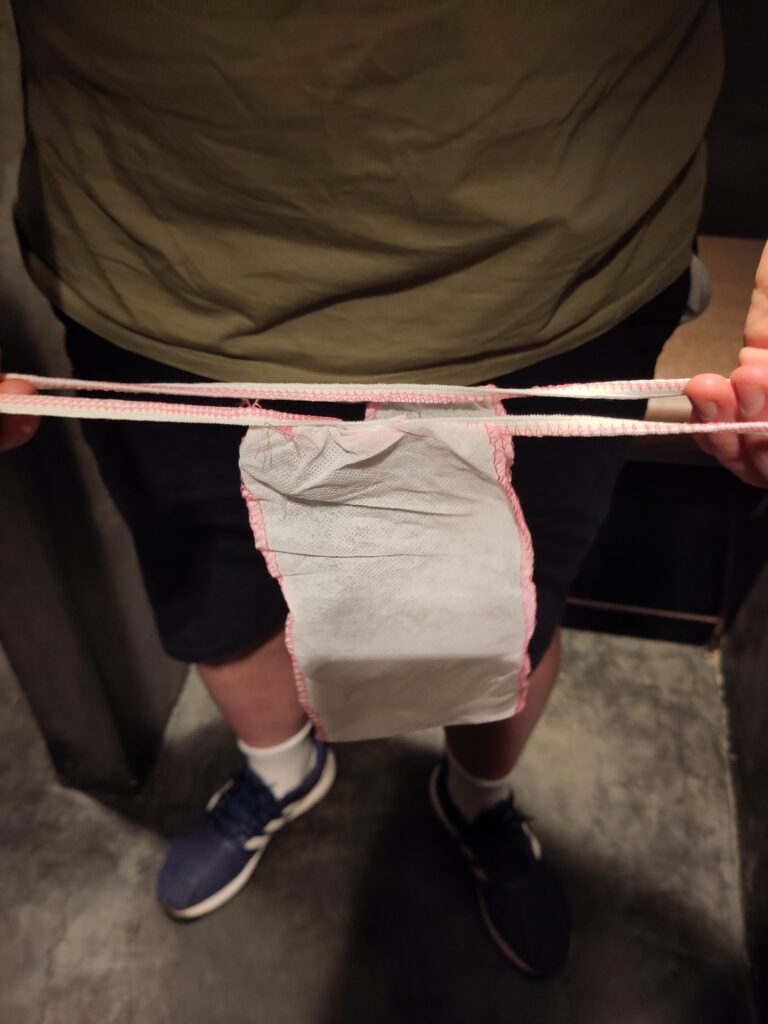
After extensive research, we chose to visit Riad Elisa & Spa. We opted for the Hammam Discovery Package which included a 30 minute Hammam with black eucalyptus soap and a 30 minute full body massage. This was priced at 600 MAD each (€55 euros). Whilst this was way cheaper than back home, this was on the pricier side for Marrakesh. However, we went on my birthday so splashed out on a nice venue.
The massage was out of this world and the setting of the spa is stunning. Everything was very clean and we had a private changing area with secure lockers.
There were loungers to relax for as long as you like afterwards. They offered us complimentary water and Moroccan tea too.
I had heard horror stories about how rough the exfoliating is so I went in expecting to bleed! I was surprised that it didn’t seem so rough and that I even had some dry skin left over. Maybe they went easy on us…
It did leave us wanting to try another Hammam scrub to see if they had but we didn’t have time in the end. I’d still recommend here if you’re after a spa-like feel to your Hammam experience (and to pair it with a massage).
Cost: Hammam Discovery Package 600 MAD (€55 euros). Other prices / packages available
Get lost in the souks
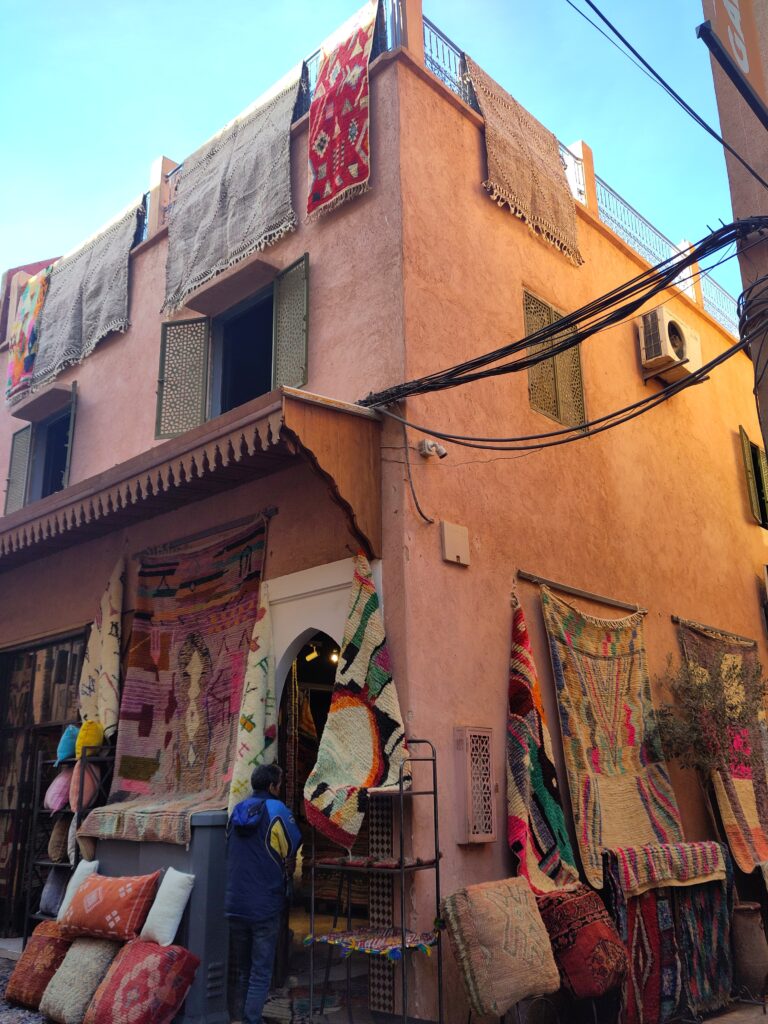

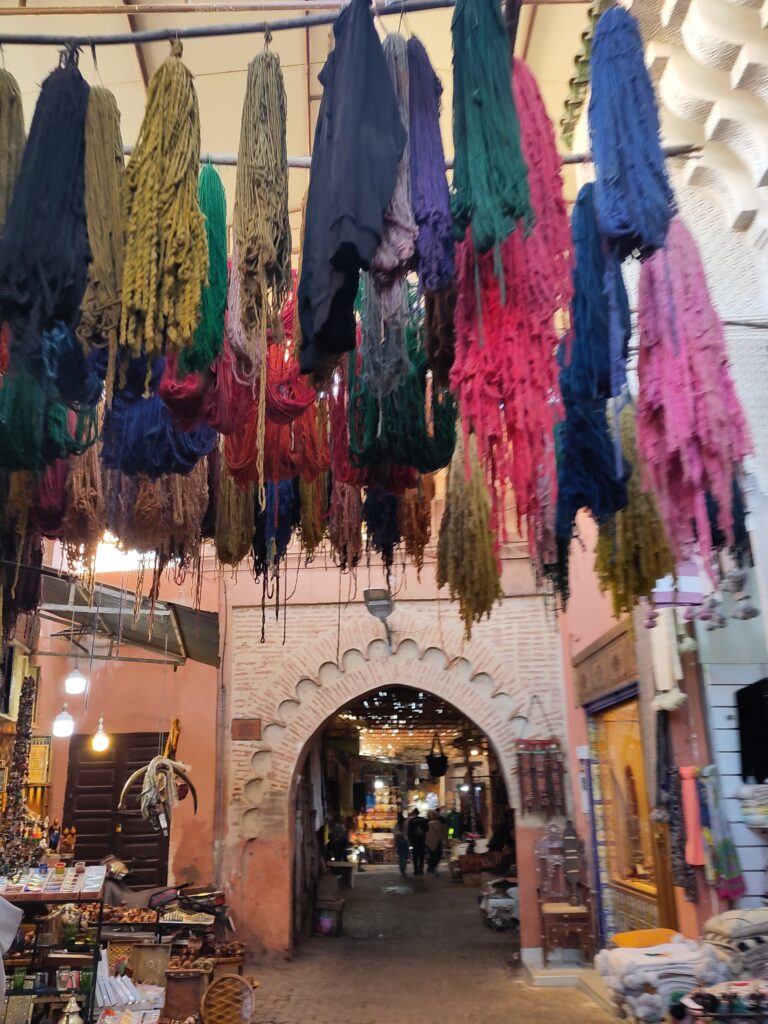
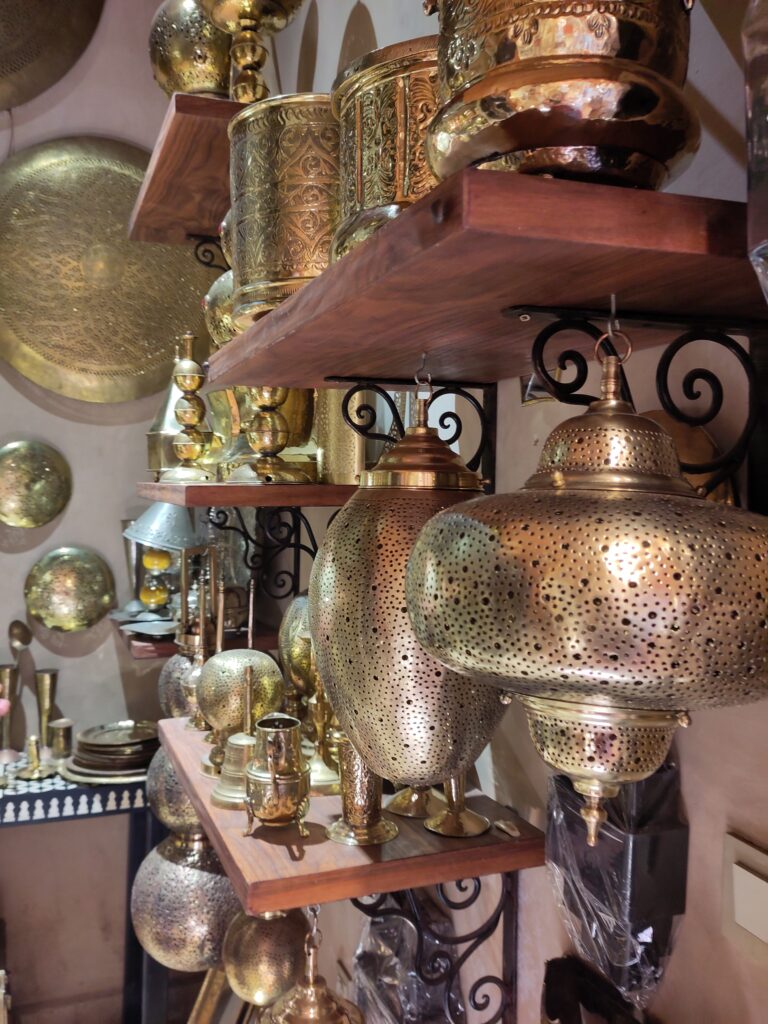
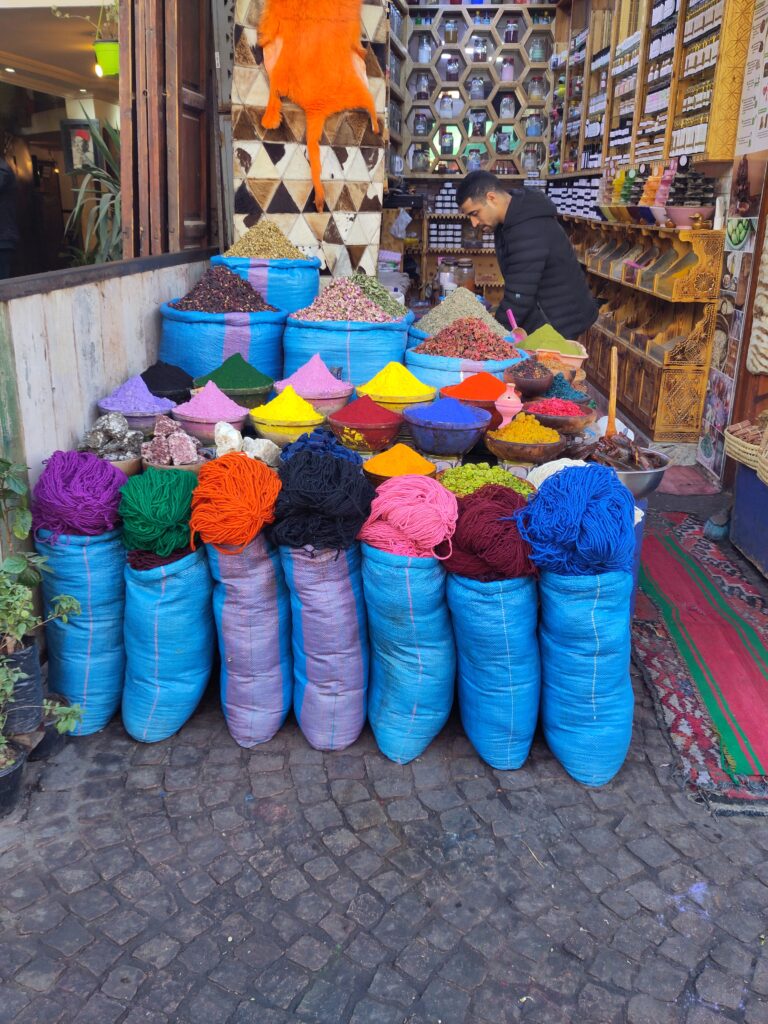
Our favourite thing to do in Marrakesh was to get lost in the souks (markets). They were an absolute feast for the senses – they’re incredible!
Your eye gets drawn into the back of tiny shop fronts to lanterns, rugs, and ceramics. I love handmade souvenirs so I had an absolute field day here. Everywhere you looked were beautiful objects crafted by extremely talented and creative people. There really is something for everyone.
We found we enjoyed the souks so much more when we didn’t have a planned destination. For example, when we were looking for the address of our Riad, or Hammam it felt a bit hectic as they are a labyrinth.
We much preferred aimlessly wandering knowing sooner or later we’d be spat out somewhere we recognised.
We recommend giving yourself a few hours to just see where you end up in there.
Are the souks in Marrakesh safe to visit?
We often came across searches of whether the souks are safe to visit. Our experience was a great one and as long as you look after your belongings you’re likely to be fine.
At first, haggling can seem intimidating but once you get stuck in you realise the sellers are actually very playful with it (and not aggressive in the slightest).
A general rule is you’ll end up paying roughly half of the initial price the seller offers (so you go in around a third of the price and work your way up).
The sellers are highly skilled at the dance of negotiation, and it works best to keep a light-hearted approach as opposed to a stern one. You’ll have way more fun this way and it ends up quite a laugh.
TIP: We believe it goes a long way to dress respectfully. For example, I made sure my knees and shoulders were covered and that I wore relatively loose clothing (nothing too clingy/ low cut). We are also big believers in learning at least how to say ‘hello’ and ‘thank you’ in the local dialect wherever we go. This likely made our visit to the souks much more enjoyable as we all know if you show respect you are much more likely to gain respect off others.
Hello: Salem
Thank you: Chakron
No thank you: La Chakron
Cost: Free!
Marvel at traditional design at Ben Youssef Madrasa
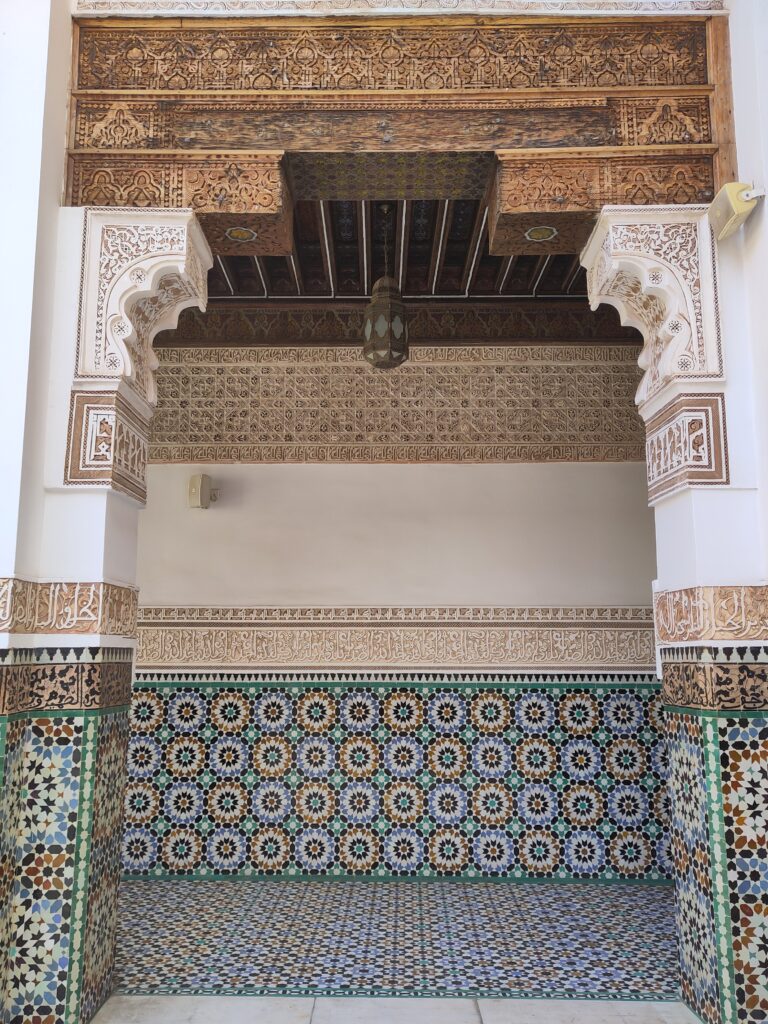

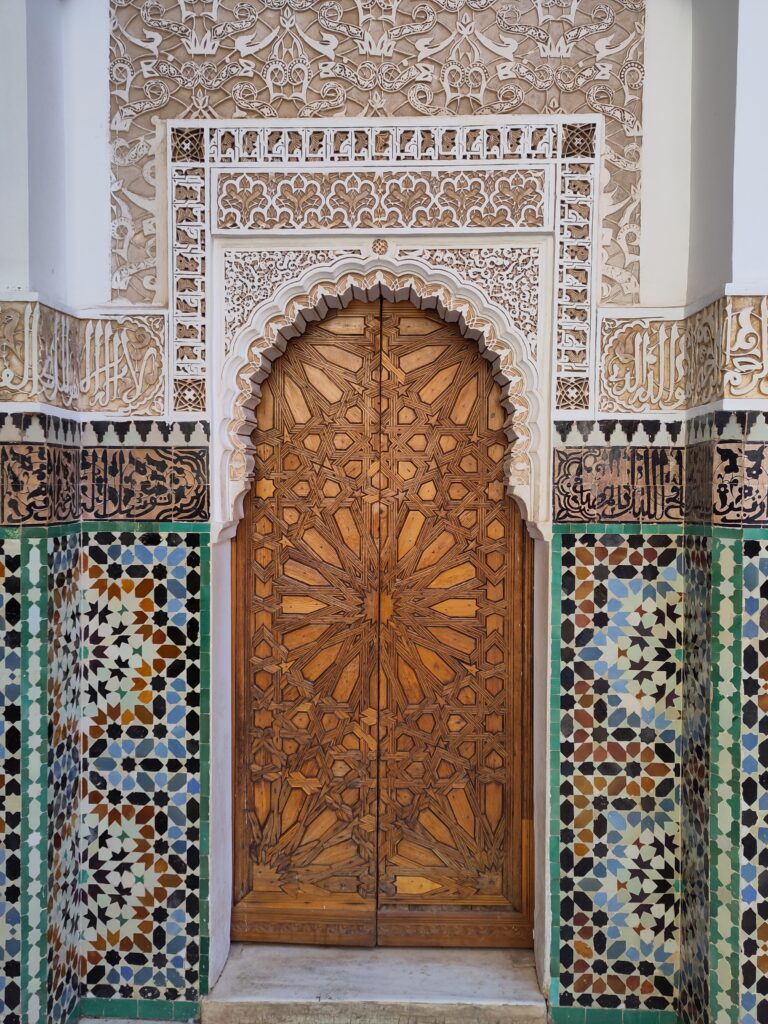
We opted to visit here last minute when we found ourselves with a couple of hours spare. We weighed up whether to go to Ben Youssef Madrasa or Bahia Palace to soak up some traditional architecture.
Our trip was in January 2025 and had read in reviews that much of Bahia Palace was sadly not accessible due to reconstruction following the recent earthquake.
Therefore, we opted for Ben Youssef Madrasa and were quite frankly blown away. It’s an old traditional school that is no longer in use but displays traditional craftsmanship and designs of Morocco.
I’d go as far as to say it’s one of the most beautiful buildings I’ve ever seen in my life. The intricacies of the detail were mindblowing, and everywhere you looked was beauty. You could look at a single tile, or a single archway or take in the whole thing at once and see something different.
I don’t think there was an inch of this building that wasn’t meticulously designed. There was carved wood, carved plaster, and contrasting tiles and somehow it felt relaxing.
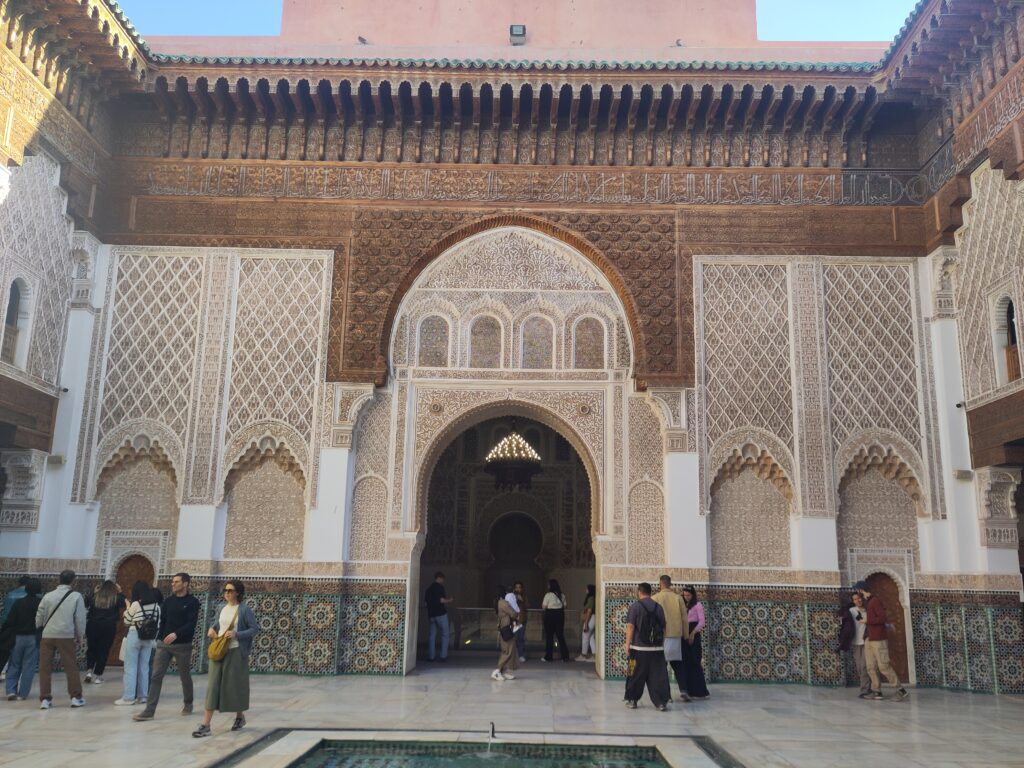
Cost: 50 MAD (€5)
Learn to make local dishes at a cooking class
When we’re away we love to do cooking classes so we can continue to savour the food we’ve loved and also enjoy reminiscing about our trips. We also try our best to travel intentionally and like to seek out local social enterprises to visit.
We did a cooking class at Amal (meaning hope in Arabic) and learnt to make a Lamb Tagine and a Chicken and Almond Pastilla.
Amal gives free culinary training courses to disadvantaged women and supports them in reaching their employment goals. They also provide vital support to villages following the recent earthquake and provide employment opportunities for the deaf community.
Part of the way they fund this work is by offering these cooking classes.
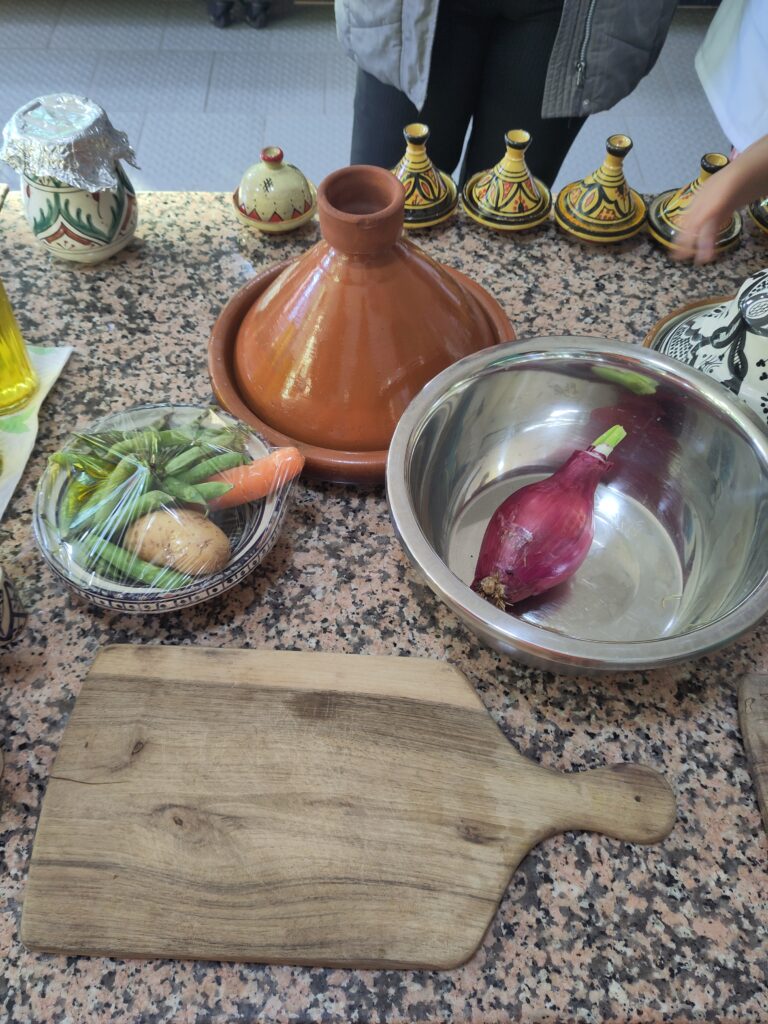
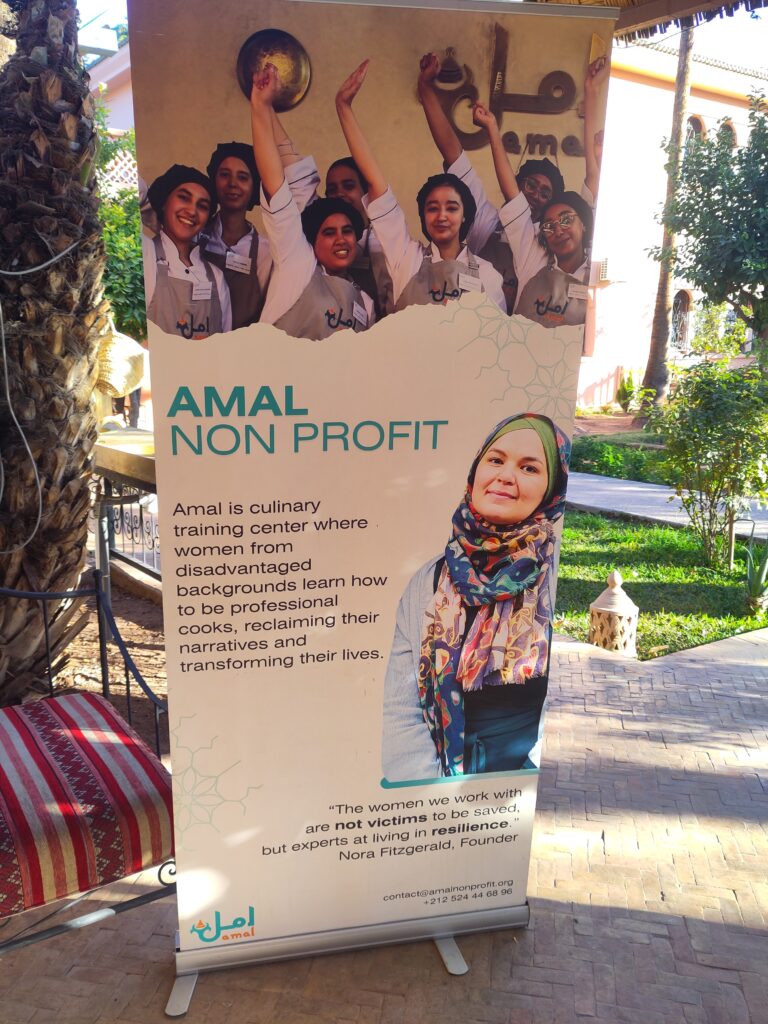
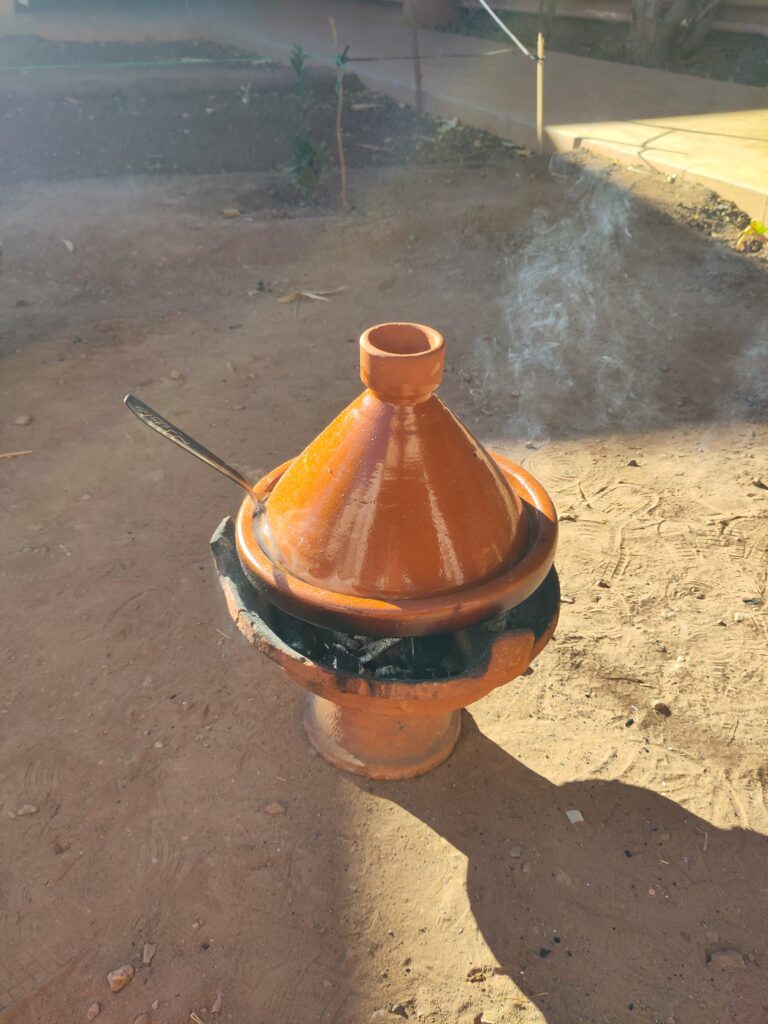
It was amazing to hear more about their work. Amal is female-founded and it’s spreading awareness all the time within the community via word of mouth, often by women which I found inspiring.
We spent half a day learning the cooking techniques and I got to cook my tagine in the traditional way outside. The grounds are lovely and relaxed and even complete with their own vegetable and herb garden so you know everything is super fresh. Our teacher even took the time to show us how Moroccan tea is prepared and shared her own stories about her family’s traditions around tea.
After the class, they send out recipes so you can re-create the meals you’ve learnt at home too. Highly recommend!
Cost: 400 – 500 MAD per person (depending on the dish)
Tuck into some local delicacies
There is so much local food you must sample in Marrakesh that it can be a whole activity in itself.
From lounging on sun-flooded rooftops sipping Moroccan tea to eating lamb cooked underground at a street food stall.
We take food very seriously and have it all covered in our other blog post.
Things to do in Marrakesh at night
Crazy golf anyone?
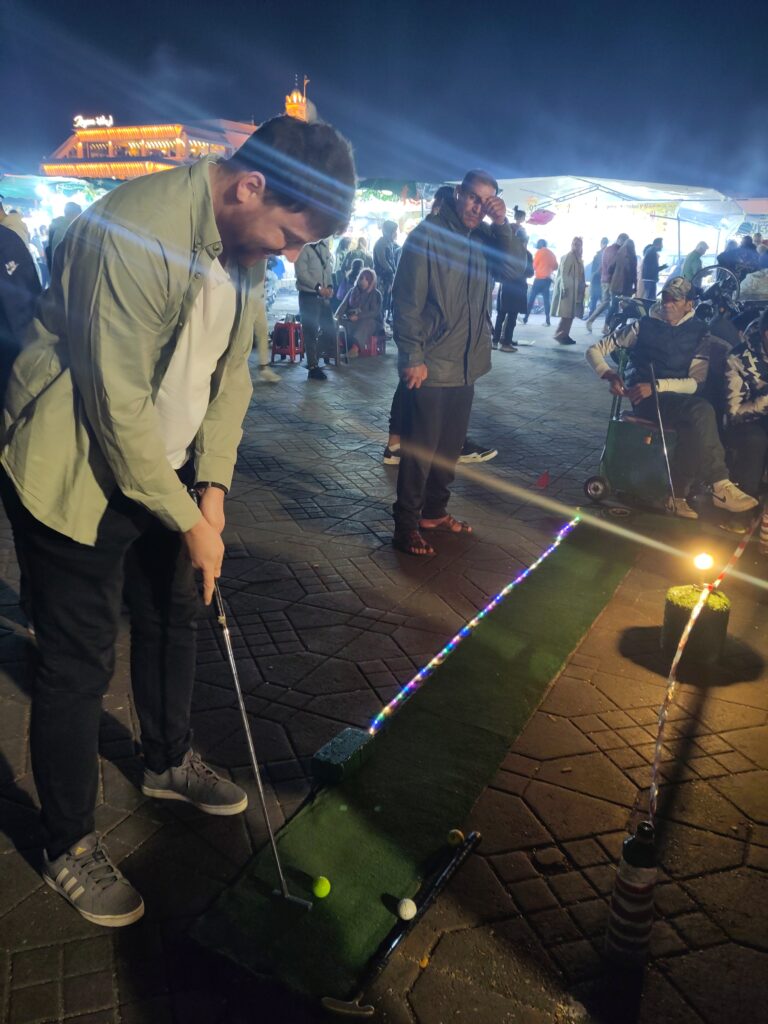
People might tell you to avoid Jemaa el-Fnaa Square at night. We can kind of see why; it’s hectic.
BUT it gives you a real flavour of life in Marrakesh and we definitely recommend a stroll through it. There are tonnes of activities from live music, to storytelling (often in Arabic), to crazy golf!
Of course, there are the more ethically dissonant activities such as watching snake charming and monkey performances but you can just avoid these. You’ll also no doubt have been warned about the ‘henna ladies’ who are known to start a pattern on your hand and demand payments (even though you didn’t ask for it). We didn’t have any trouble with this and found if I walked with my hands on my bag (not at my sides) they didn’t approach me.
It can feel intimidating to go and join in with some of the activities because crowds are large but we were so glad we did.
Joe played on the crazy golf and ended up getting a crowd of onlookers clapping him. It was a nice way to interact with local people and feel part of the atmosphere rather than on the periphery.
Cost: I think Joe paid around 20 MAD for golf
Head to a cafe for some storytelling or open mic nights
We were gutted we didn’t get around to this, but we had planned to visit Cafe Clock and the World Storytelling Cafe in the evenings. Storytelling is an activity thought to date back to 11th century in Marrakesh. You can still see storytellers in the square but these are often delivered in Arabic. Head to these cafe’s if you want to experience this old tradition in other languages; they offer weekly opportunities.
Cafe Clock has something on every night ranging from jam sessions, and storytelling to workshops. Check out their website or Facebook page to see what is on during your visit.
Check what events World Storytelling Cafe’s have on during your stay (they also serve vegan food).
Cost: Free (unless stated otherwise)
Enjoy some local food on an atmospheric rooftop
We loved our dinner at L’Mida, the food atmosphere and views were top-notch. You can read more about it here.
A friend of mine highly recommended a dinner and show experience at Dar Soukkar but we didn’t get around to it this time. Find further inspiration here and view some to book here.
There are also a few Jazz bars like La Pergola that we’d go to next time.
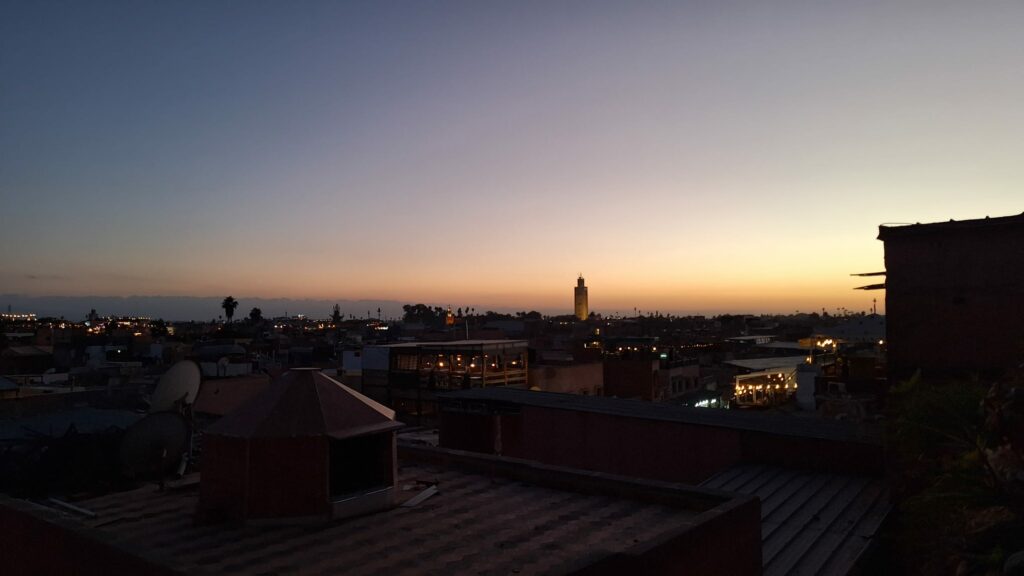
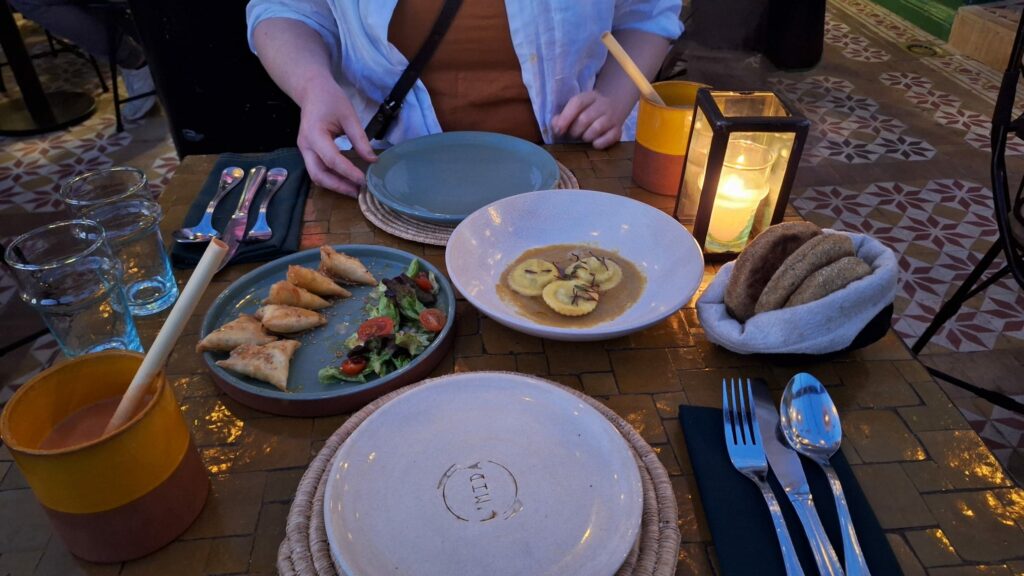
When is the best time of year to visit Marrakesh?
If you’re after a city break exploring the Medina, opt for a shoulder season visit to avoid stifling temperatures. March-May and September-October are considered high season and see more visitors. You’ll likely save money travelling outside of these times and experience fewer crowds.
We visited in January and it provided the perfect break from the cold UK winter. It was so nice not to have to wear a coat and temperatures were often between 18-23 Celsius. Mornings and evenings were a bit chillier (although we could still eat outside) so just layer up.
Getting around in Marrakesh
How to get from the Airport to the Medina in Marrakesh
We pre-booked a taxi from the airport with our Riad because it seemed simpler. See if this is an option with your Riad and ask if someone will meet you at the drop-off point.
Taxis aren’t allowed in the Medina at certain times so you’ll find they’ll drop you on the outside and it can be hard to navigate maps in the souks to find your Riad.
If this isn’t an option then we did see a taxi rank at the airport with a machine to pre-pay the trip (good if you don’t have any currency on you). This way too you know you’ll have a fixed fee.
We also spotted a bus from the airport once we arrived, but it looks like this takes longer. For prices and timetables check here

Arranging other transport
Within the souks, there are people working for taxi drivers to arrange rides.
For our cooking class (approx 20 min drive out of the centre) we booked one this way. We negotiated a return fee of 150 MAD, and the driver gave us his WhatsApp number. He didn’t ask for an upfront payment and came to get us with no problems later on.
For our return trip to the airport, we organised our own taxi again by approaching them and negotiating a deal.
TIP: We left it a bit late to head back to the airport (although it ended up being fine). We didn’t realise you have to queue to get inside the airport building on the way back in and go through an additional mini security there. We’d never experienced that before and it added on time. The queues look worse than they are, and they move quickly.
Where to stay in Marrakesh
If you’ve not already organised your accommodation, we highly recommend staying in a Riad.
Riads are unique traditional houses laid out to home multiple generations around a courtyard. Many have been transformed into hotels to welcome guests. Our tour guide told us that they traditionally didn’t have swimming pools as you’ll see many have now. These are to cater to tourists more.
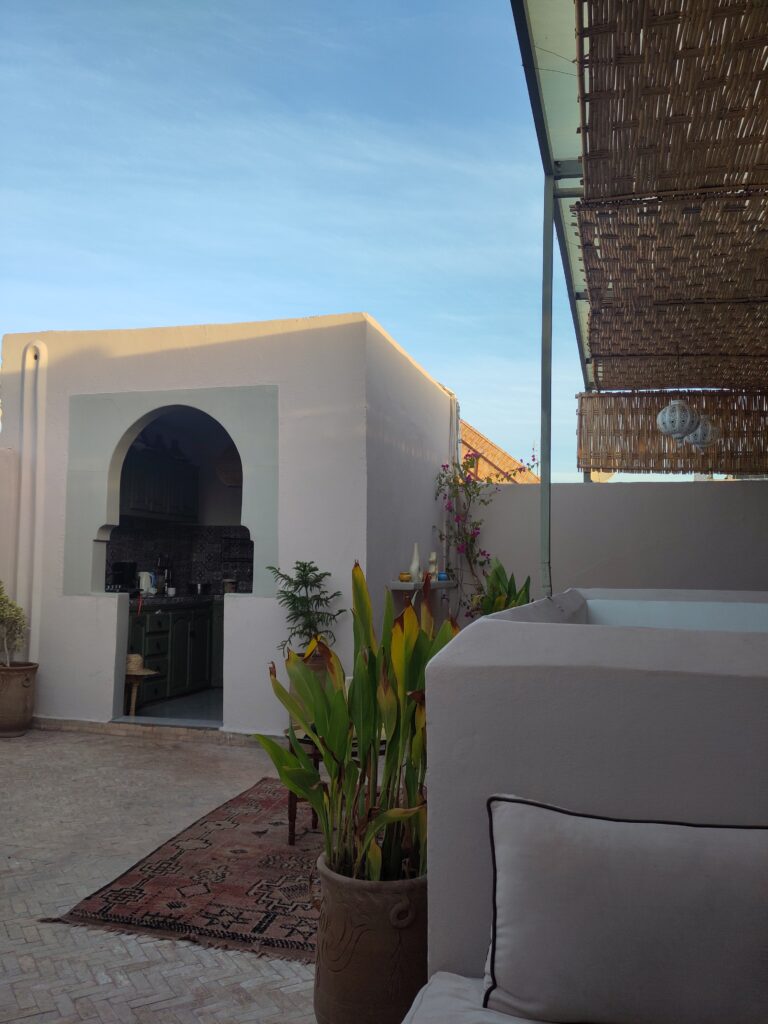
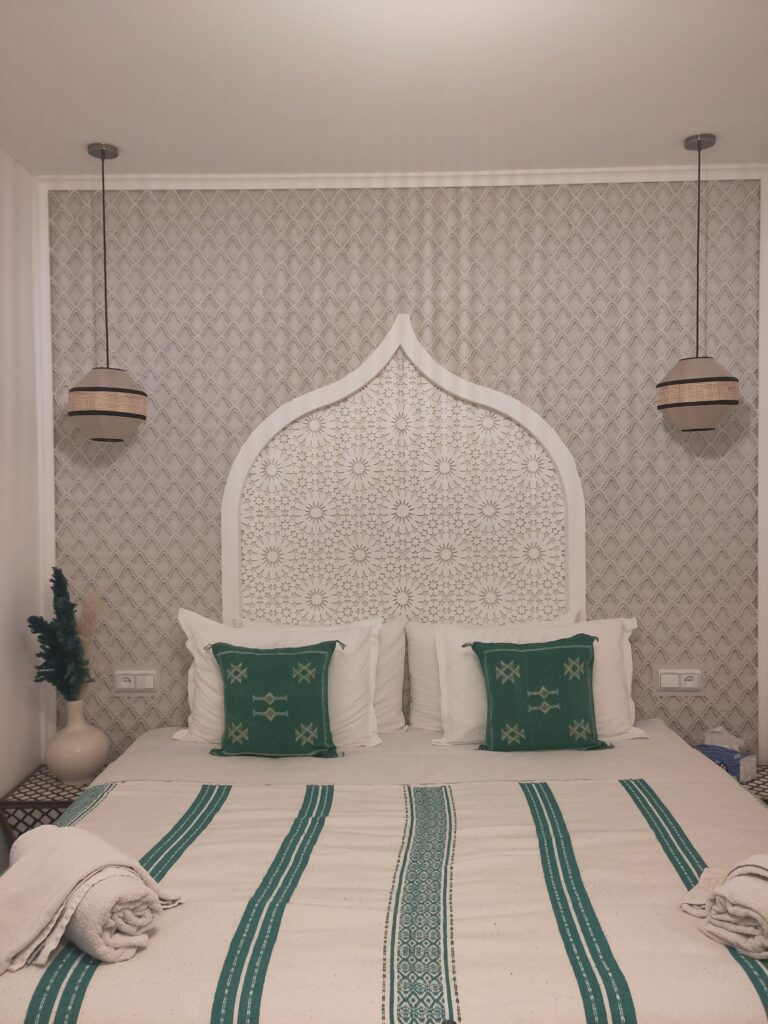
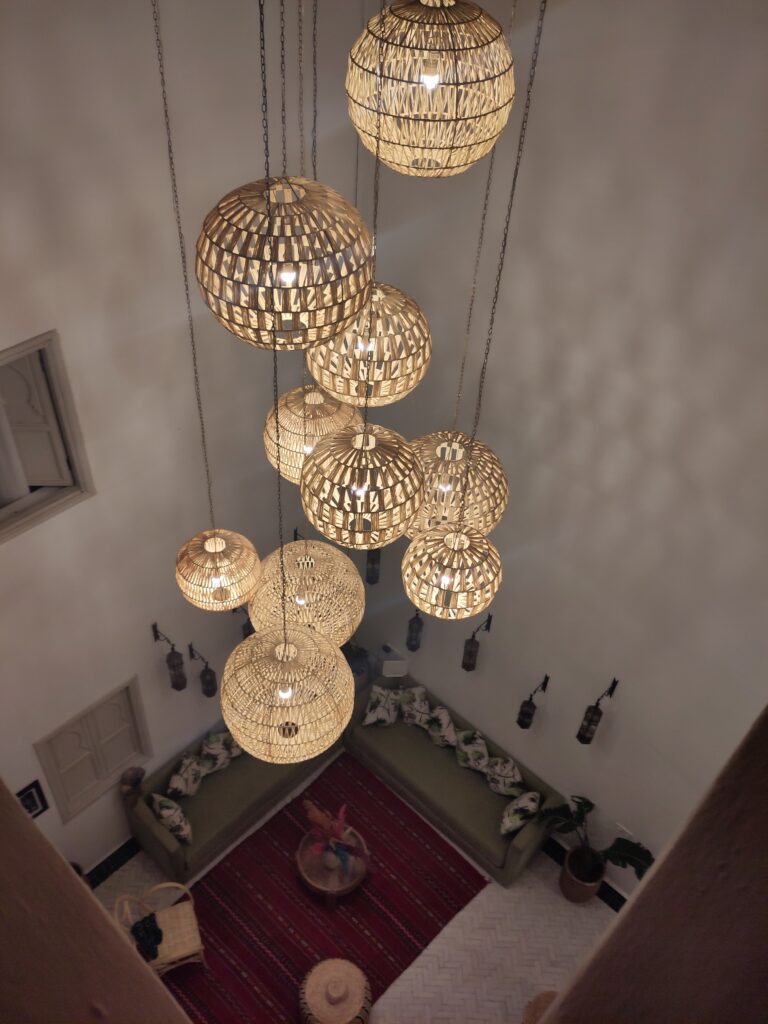
The Riad we stayed in was one of the best places we’ve stayed ever! Read about our stay and why we recommend it here.
Or if you’d prefer to browse you can view some beautiful properties with highly rated reviews here.
Enjoy your visit to Marrakesh, and let us know which of our recommendations you tried out in the comments! We are always up for talking all things travel.
